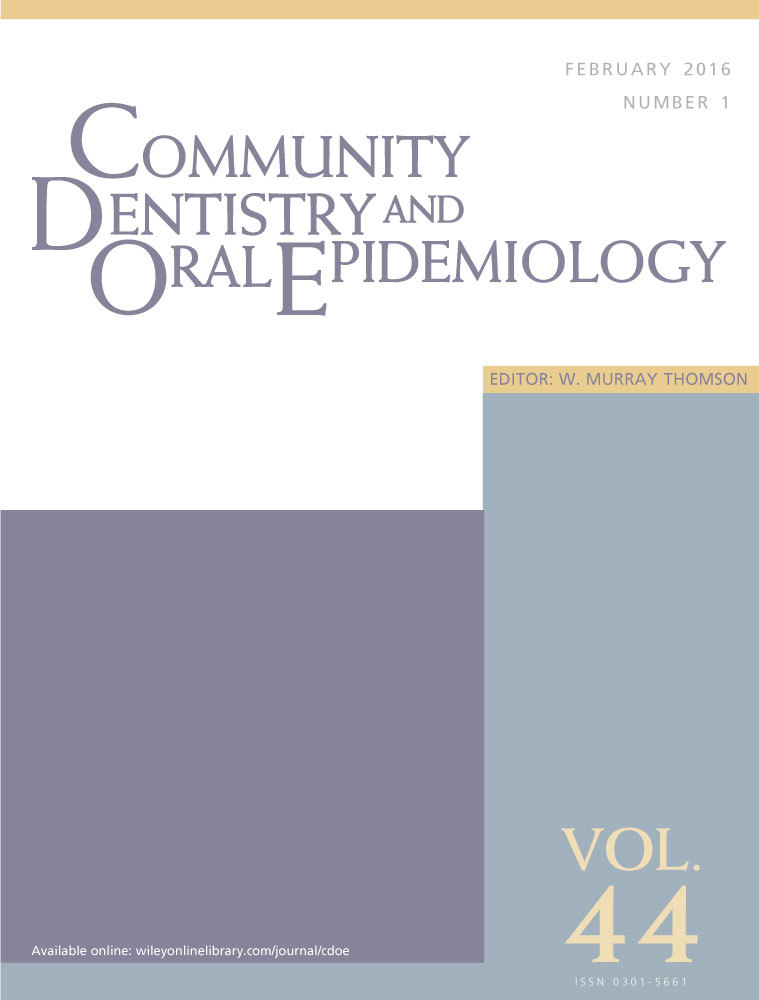Timing of fluoride intake and dental fluorosis on late-erupting permanent teeth
Abstract
Objective
Very few studies have examined the relationship between timing of fluoride intake and development of dental fluorosis on late-erupting permanent teeth using period-specific fluoride intake information. This study examined this relationship using longitudinal fluoride intake information from the Iowa Fluoride Study.
Methods
Participants’ fluoride exposure and intake (birth to 10 years of age) from water, beverages, selected food products, dietary fluoride supplements, and fluoride toothpaste was collected using questionnaires sent to parents at 3- and 4- month intervals from birth to 48 months of age and every 6 months thereafter. Three trained and calibrated examiners used the Fluorosis Risk Index (FRI) categories to assess 16 late-erupting teeth among 465 study participants. A tooth was defined as having definitive fluorosis if any of the zones on that tooth had an FRI score of 2 or 3. Participants with questionable fluorosis were excluded from analyses. Descriptive and logistic regression analyses were performed to assess the importance of fluoride intake during different time periods.
Results
Most dental fluorosis in the study population was mild, with only four subjects (1%) having severe fluorosis (FRI Score 3). The overall prevalence of dental fluorosis was 27.8%. Logistic regression analyses showed that fluoride intake from each of the individual years from age 2 to 8 plays an important role in determining the risk of dental fluorosis for most late-erupting permanent teeth. The strongest association for fluorosis on the late-erupting permanent teeth was with fluoride intake during the sixth year of life.
Conclusion
Late-erupting teeth may be susceptible to fluorosis for an extended period from about age 2 to 8. Although not as visually prominent as the maxillary central incisors, some of the late-erupting teeth are esthetically important and this should be taken into consideration when making recommendations about dosing of fluoride intake.




